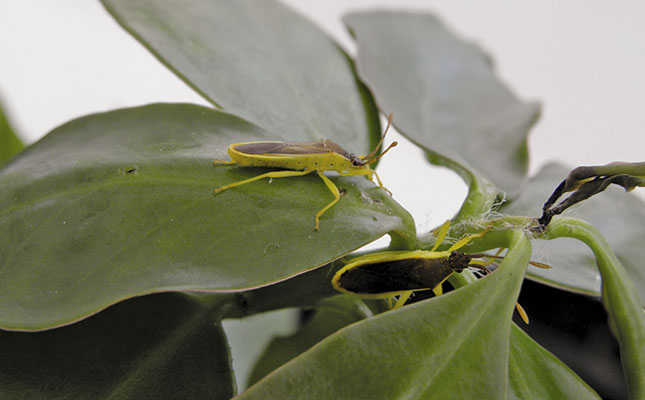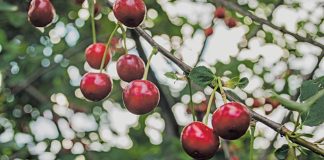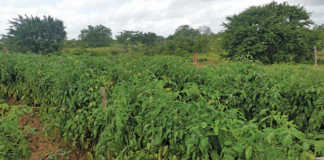
Conservationists and sugercane farmers have struggled for years to control Pereskia aculeata (Barbados gooseberry) but with little success. Now, after seven years of research by the Department of Zoology and Entomology at Rhodes University, an effective biological control agent is due to be released in South Africa. The insect, the Pereskia stem-wilter (Catorhintha schaffneri), feeds exclusively on P. aculeata and poses no environmental threat. The research was funded by the Department of Environmental Affairs’ Working for Water Programme.
The invasive P. aculeata is a vine-like cactus from South America that was brought to South Africa as a botanical curiosity
in 1858. By the 1970s, the plant had spread over a large part of the country and reached such high densities that it was declared an environmentally damaging invasive alien weed.
Difficult to control
Pereskia smothers indigenous plants and even kills large forest trees. As the plant grows in ecologically sensitive and hard-to-reach areas, control using herbicides and physical removal is difficult. It can also reproduce from fragments, which means that follow-up operations are required almost indefinitely. In addition, whether herbicides or physical removal are used, it is impossible to avoid killing surrounding vegetation as the weed intertwines itself with other plants.
READ MORE: 12 ways to protect the land
One reason Pereskia is a problem in South Africa is that no insects feed on the plant here. In its native habitat, insects and pathogens feed extensively on it, and it never reaches high densities. The Pereskia stem-wilter is one example; this sucking bug destroys the growing tips of the cactus, stunting growth and reducing its ability to compete with other plants.
A natural balance
Research on the Pereskia stem-wilter began at Rhodes University in 2007 and the insect has been bred in quarantine since 2012 and tested for host-specificity to identify which plant the species can feed on. It is clear that the Pereskia stem-wilter can only survive on P. aculeata and will die if forced to feed on other plants. This means that if it is released here it will not harm indigenous plants or crops. If all the Pereskia in an area is destroyed, the insect will either disperse to another cacti site or its population will die out.
The department of agriculture recently granted permission to release the Pereskia stem-wilter in South Africa, and this will be done in September. This is expected to reduce Pereskia densities, resulting in a return to indigenous biodiversity at previously infested sites.
Contact Dr Iain Paterson, Department of Zoology and Entomology, Rhodes University, at 073 734 7752 or [email protected].













